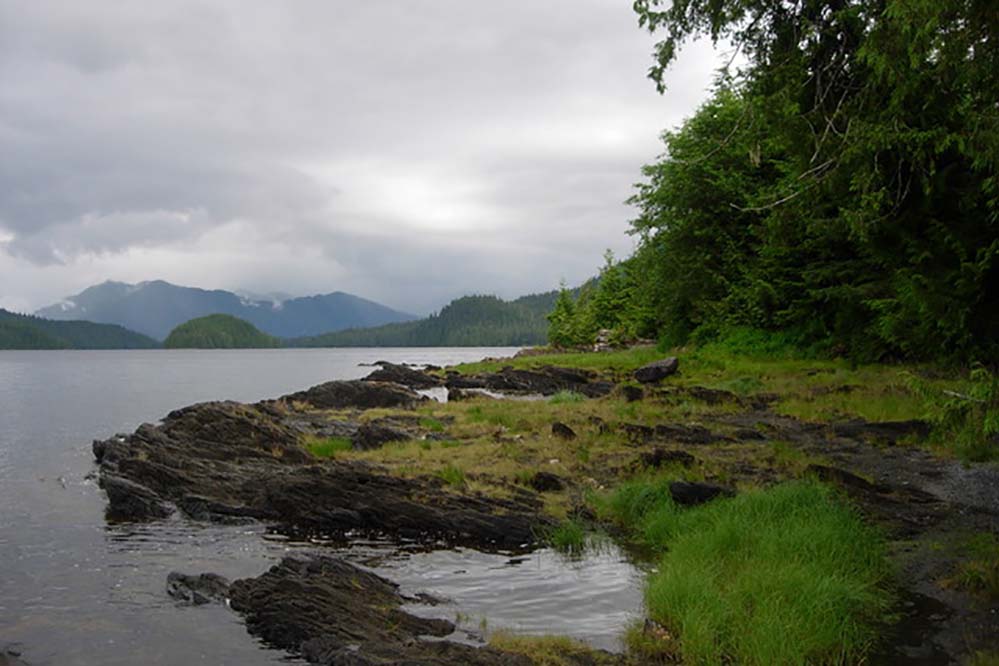
- Details
- By Chez Oxendine
- Sovereignty
Conservation of the Tongass National Forest means more than protecting old trees.
That’s according to Joel Jackson, the president of the Organized Village of Kake, who said the Tongass provides a thriving yet fragile ecosystem for its Indigenous inhabitants.
The large, old-growth trees that line the streams in the 16.7 million acre Tongass — the traditional homelands of the Tlingit, Haida, and Tsimshian peoples — ensure the water is safe for salmon while also offering habitat for deer and other wildlife. In Alaska, where food security can often prove tenuous for tribal populations, access to consistent hunting and fishing is crucial, Jackson said.
Want more news like this? Get the free weekly newsletter.
“That’s really critical, the food security thing,” Jackson told Tribal Business News. “Being in Alaska, as isolated as we are, during this pandemic we’ve found that it’s important that we keep our forest pristine so that we can hunt, fish and gather.”
On a more global scale, the forest serves as the last major carbon sink in North American in what’s becoming an increasingly volatile climate situation. The Tongass represents more than 40 percent of national forest carbon storage, per a March 2021 report by an Earth Island Institute researcher.
Given the local and global importance of the Tongass National Forest, Jackson believes the U.S. Department of Agriculture’s recently announced plans to restore protections for the forest is a “step in the right direction.”
In a joint statement, Southeast Alaska tribes took it a step further, saying the actions are “as settling as coming ashore after a long storm at sea.”
“Obviously, since they’re looking at reinstating the 2001 Roadless Rule, it’s moving in the right direction and we couldn’t be happier about it,” Jackson said. “I was wishing the whole process would move quicker than it is, but that’s government for you.”
The USDA’s proposal would restore Roadless Rule protections, first instituted in 2001, to about 9.2 million acres of forest, or roughly 55 percent of the Tongass territory.
The new plans come after the state of Alaska petitioning the USDA to exempt the Tongass from timber harvesting protections in 2018, a request that was granted in 2020 under the Donald Trump administration. That exemption drew protest from environmentalists and the area’s tribes, who were supported in their efforts by the National Congress of American Indians and the Affiliated Tribes of Northwest Indians.
“Despite (concerted tribal efforts), the Trump Administration moved forward removing federal Roadless Rule protections for the Tongass, leaving our tribal governments disenfranchised once again and our forests vulnerable and open to unchecked road construction, logging, and other large-scale industrial development,” according to a joint statement from southeastern Alaska tribes.
By pressing ahead to reinstate the rule, the USDA is proving itself to be more willing to consult with tribes than previous administrations, according to tribal leaders. Prior reporting by Tribal Business News chronicled more contentious consultations in the past between federal agencies and tribal governments, including the USDA.
Some advocates even pointed to shortcomings in the Tongass process, during which USDA consulted with tribes only after issuing a press release about their intentions to reinstate the Roadless Rule protections.
Even so, Jackson described the meetings as “meaningful consultation.”
“It started off really good. We had an in-person meeting in Juneau, and a virtual one later on,” Jackson said.
Involving tribal leaders in the decision-making process was part of an overall sustainability push in the region, Agriculture Secretary Tom Vilsack said in a statement. Earlier this year, the USDA announced the Southeast Sustainability Strategy, which purports to include tribes and Alaska Native Corporations in a $25 million push aimed at building “sustainable opportunities for economic growth” in the region, per a USDA statement.
“Restoring the Tongass’ roadless protections supports the advancement of economic, ecologic and cultural sustainability in Southeast Alaska in a manner that is guided by local voices,” Vilsack said. “The proposed rule is considerate of Alaska’s Tribal Nations, community input, and builds on the region’s economic drivers of tourism and fishing.”
Jackson and his colleagues want that involvement to graduate from seats in the forum to seats at the table.
However, their next request will be for tribes to help co-manage the territory.
“We want to be the management of our homelands — our customary, traditional homelands. At the very least, (we want) co-management of these areas,” Jackson said. “I think that would be great moving forward, and also the permanent protection of the Tongass National Forest, which I think is very important not only for the region but for the world.”
The USDA’s proposed reinstatement of the roadless rules kicked off a 60-day comment period that began on Nov. 23. Comments can be submitted by mail, email or electronically via the Federal Rulemaking Portal.
“We must fight for the protection of these lands and waters and the cultural survival of our people for future generations,” Richard Chalyee Éesh Peterson, president of the Central Council of the Tlingit & Haida Indian Tribes of Alaska, said in a statement. “Our tribal governments have long sought to work cooperatively with the USDA in decisions that affect the traditional lands of our people. It’s long overdue for the USDA to meaningfully incorporate tribal perspectives into the management and decision-making processes.
“Our voices will remain unified and it’s time we look at co-governing to protect our traditional homelands and areas of tribal importance.”
